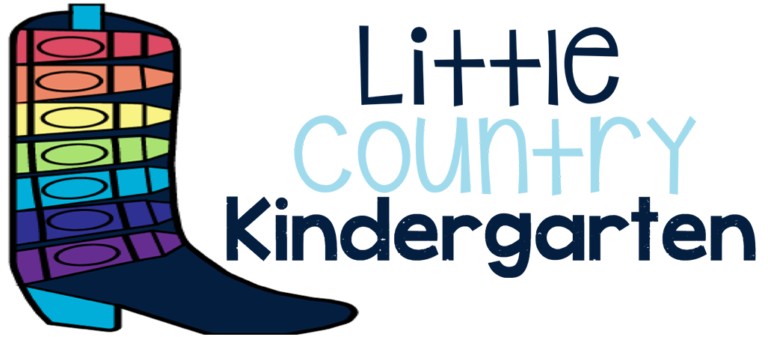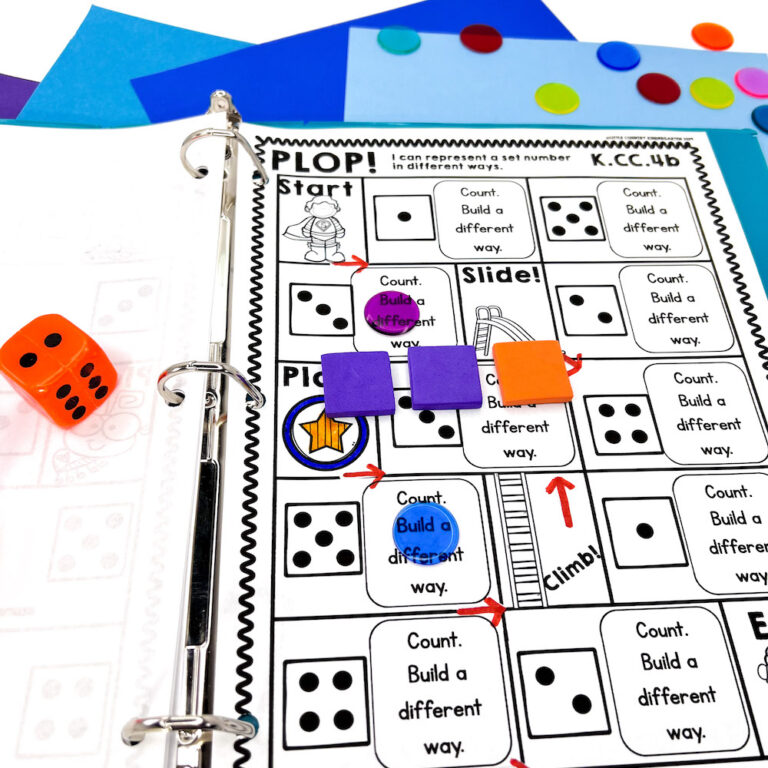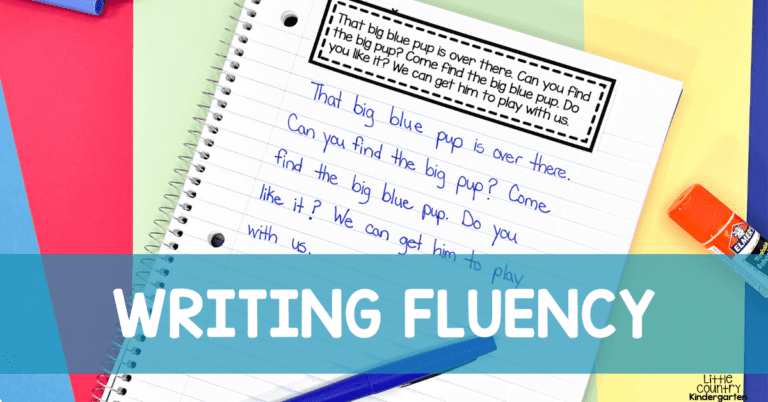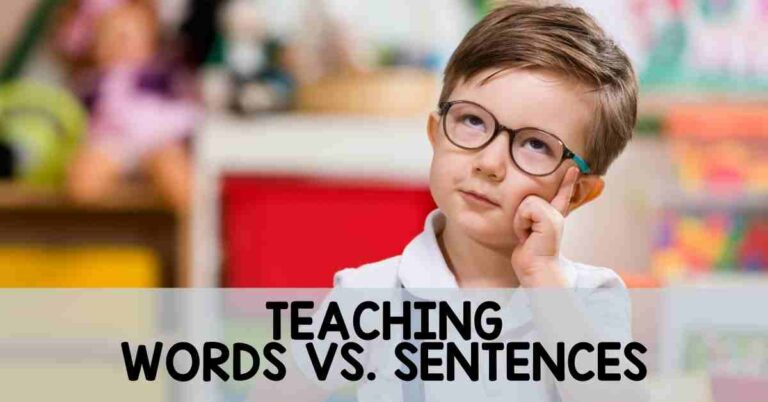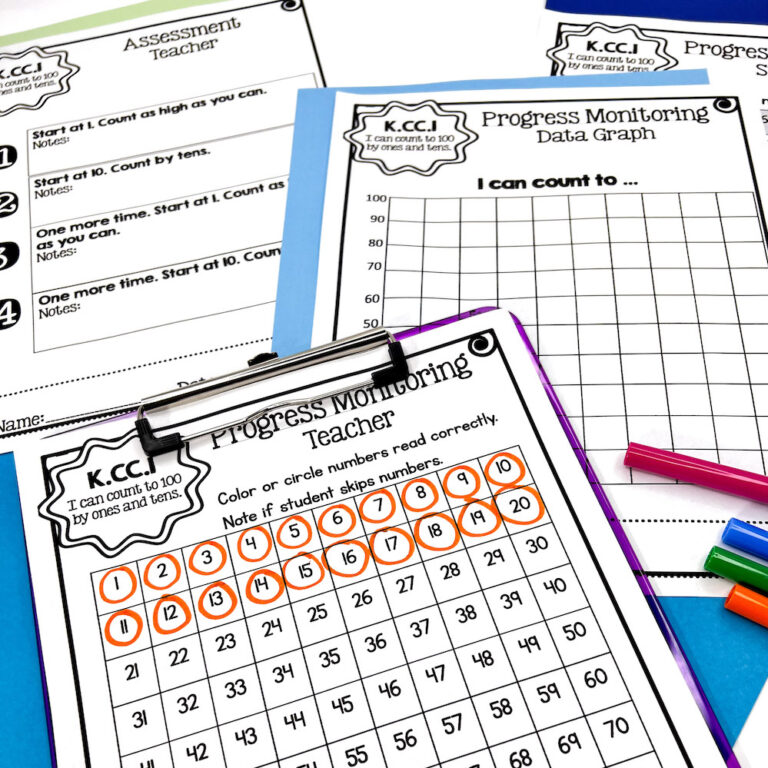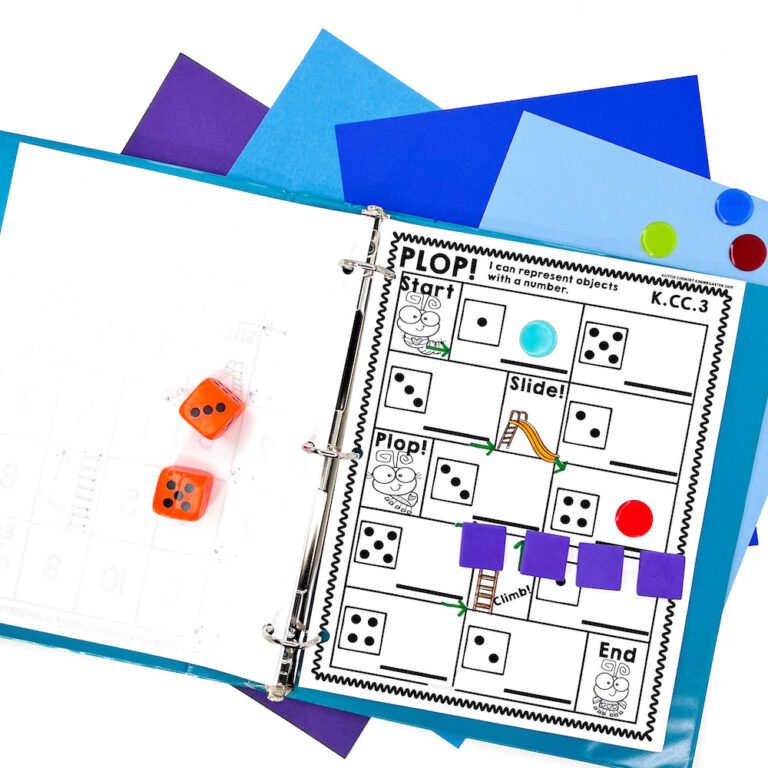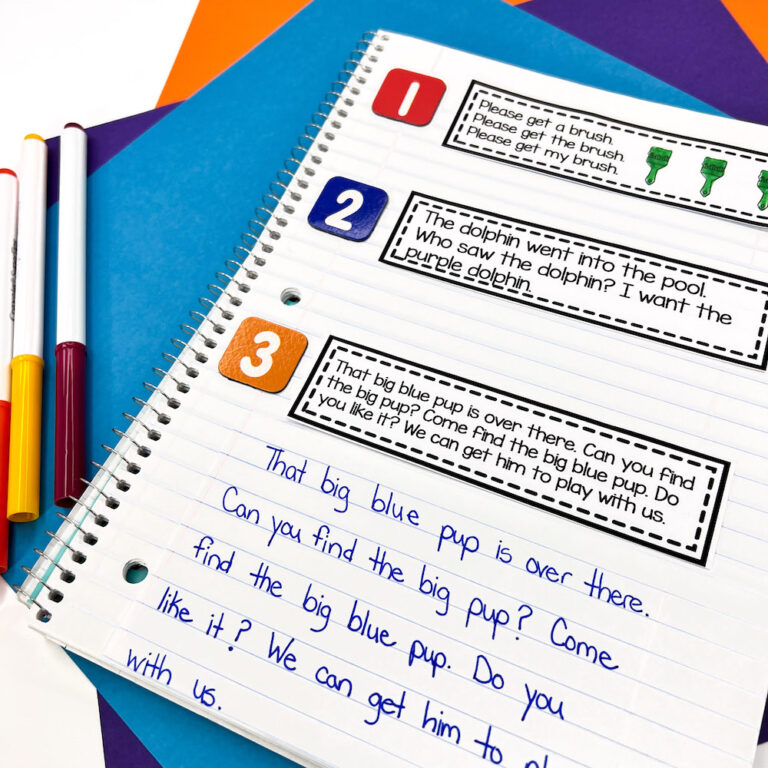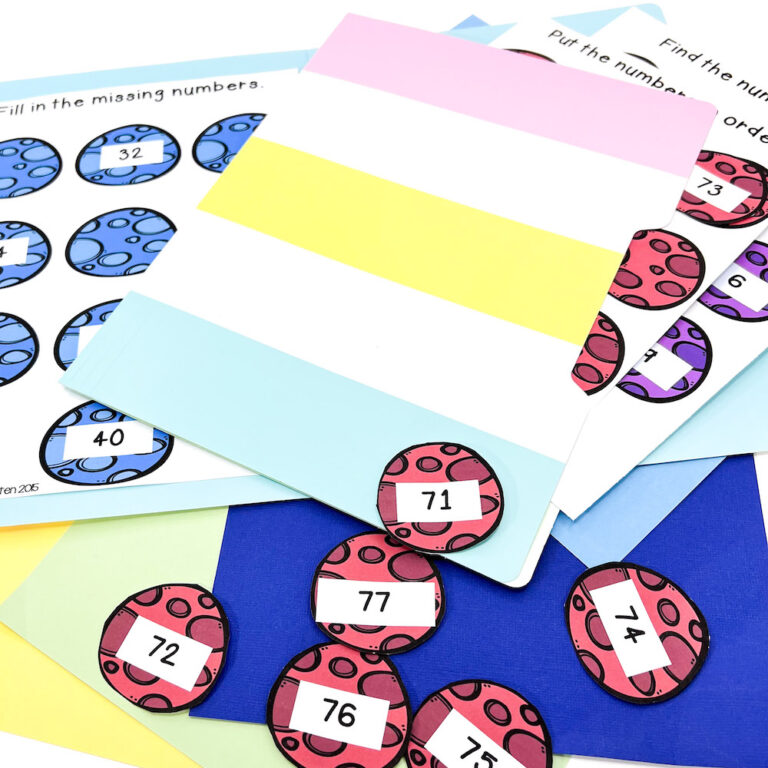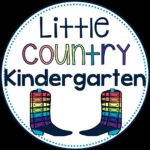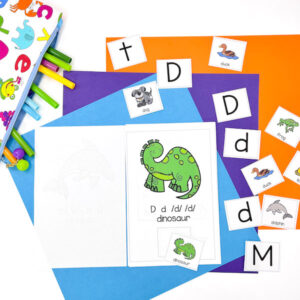Kindergarten handwriting is one of the most important things to teach in my opinion. You want to make sure you are teaching kindergarten students how to have correct letter formation from the beginning so that they are not having to unlearn incorrect writing strokes. However, it can also be challenging to teach because how do you monitor a classroom full of students writing at one time? How do you engage students to slow down and have legible kindergarten handwriting? How do you motivate reluctant writers who may have never held a writing utensil before?
Kindergarten Handwriting: Why Does it Matter?
We all have those friends whose writing literally looks like chicken scratch. Even in today’s world where we text or type so often, handwriting is still important and as kindergarten teachers we get to teach it so students have this basic life skill. While we aren’t worrying about fancy calligraphy, we do want students to have legible kindergarten handwriting that they and others can read and understand. This basic foundation will be something they build on as they continue to first grade and beyond. They have to learn this before they can focus on better sentence writing, so what is our starting point?
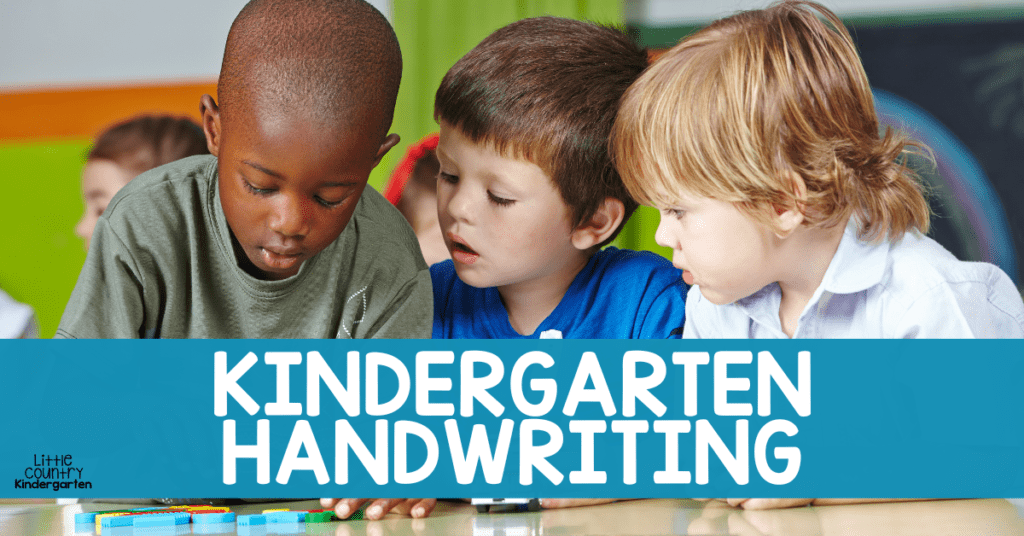
How to Teach Handwriting in Kindergarten
1. Fine Motor Skills
Fine motor skills are key to kindergarten handwriting and should be worked on before students even hold a writing utensil. Students need to practice strengthening the muscles in their fingers, wrists, and hands so they are strong enough to do writing tasks. When our younger students come to school still having a hard time with self-help skills such as buttoning, zipping, and gripping, they often lack the fine motor skills necessary to complete kindergarten tasks. Fine motor practice where students build these muscles and their eye-hand coordination are the first step before practicing with letter formation activities
I love to incorporate fine motor practice with morning tubs and this is a great way to start your school day. These are also easy to incorporate for early finishers or as a transition activity. Some of my students’ favorite activities are pegboards, play dough, lacing beads, sorting items in sensory bins with pincers, tongs, and scoops, building with wikki stix, and weaving with pipe cleaners. Messy writing with shaving cream can be another fine motor skill that involves a sensory experience and even cleans the tables! These activities may seem just like play, but these hands-on handwriting activities for kindergarten are really necessary.
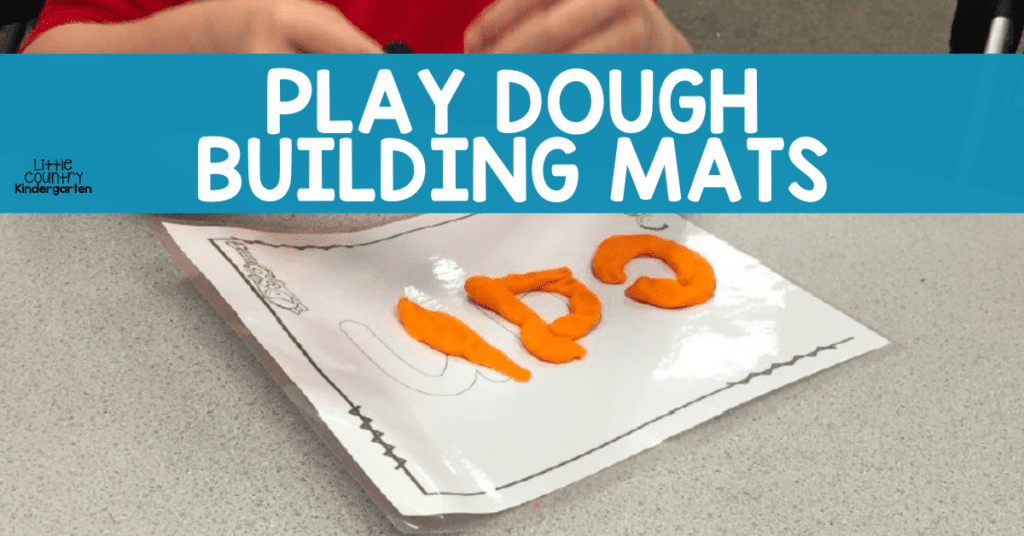
2. Music & Movement
We sing a lot in my kindergarten classroom! Songs and movement are a fun way I can engage students in proper letter formation with letter writing songs. Young children can sing the words, use their arms to write big letters in the air properly, and remember the way letters are supposed to be written by using their bodies. These fun handwriting activities for kindergarten are easy ways to practice in a more nontraditional way.
I also like using technology by playing tracing games on the SMARTBoard where students can properly trace letters using their fingers on the big screen. If you’ve ever seen the old Sesame Street letter episodes the children are often making the letters by laying on the ground and curving their bodies to make the letters. This can be another fun movement activity to do in partners or small groups to see if they can make the letters life size.





3. Daily Explicit Practice
The best way to teach kindergarten handwriting is with daily explicit practice. Just like anything else we teach, the more our students have exposure and practice the better they will excel. I like to keep engagement with daily practice by using centers that stay the same structure wise but change up themes and appearance. That way students know how to use them but don’t get bored. My monthly file folders that I switch out based on our new monthly themes contain tracing pages for prewriting strokes, lowercase letters, uppercase letters, numbers, and shapes, so students can practice tracing and forming these items properly.
This is a center I like to monitor. I often have writing center right in front of where I’m meeting with my small groups so I can keep a close eye on students. This allows me to see if students are forming letters properly and taking their time to perfect their kindergarten handwriting instead of just playing with the markers. Giving constructive feedback and praise for writing properly boosts student confidence and encourages them to keep working through challenges.
You can set up an engaging handwriting station really quickly. I have a wooden tray that includes regular pencils, fun mini erasers, crayons, and different writing papers as the year goes on. It starts with just tracing papers for students to practice good handwriting and evolves to include prompts with sentence starters or picture only prompts as their handwriting skills improve. A fun writing station can be a game changer for your classroom!
Once students have proper letter formation you can mix up handwriting practice even more! Some more engaging handwriting activities for kindergarten include rainbow writing where students write their letters and sight words in different colors, have students use sidewalk chalk to practice outside, post around the room letters where students find them scavenger hunt style and write the ones they see, and many other creative ways!
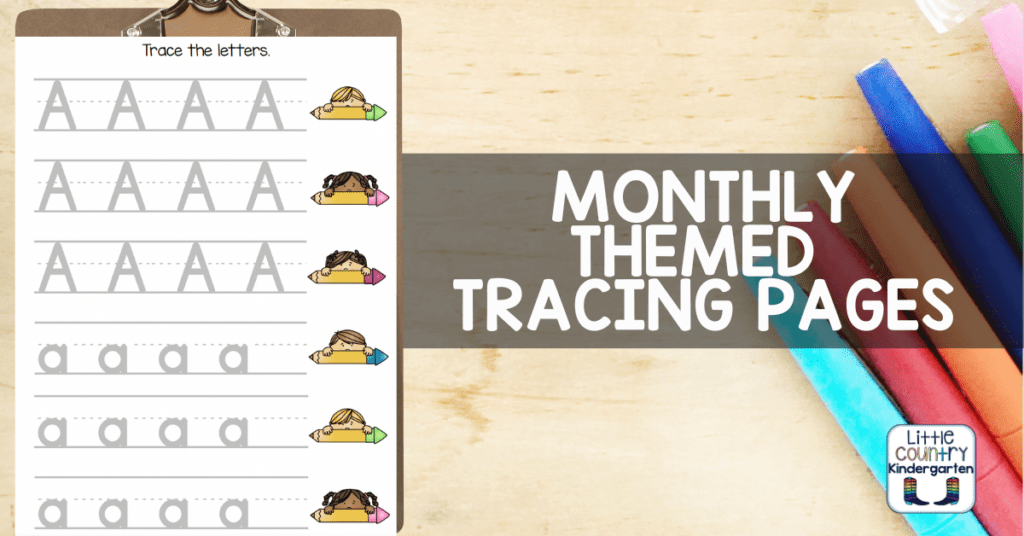
4. Home Connections
Home connections are important for all subjects, but especially for kindergarten handwriting. Parents need to know what is developmentally appropriate and I like to explain how students have to build up their fine motor skills before their handwriting will improve in legibility. Some things you can send home include guides that show parents the proper ways students should be practicing their letters, guides on handwriting size and what is appropriate for different times of the year, and exemplars so they know what their students are striving for. Sending home a simple letter formation sheet in their daily folder as well as links to letter formation videos is a great way to keep parents informed and helps them make sure any practice at home is proper practice.
Kindergarten Handwriting Takeaways
Through handwriting activities for kindergarten including fine motor practice, music and movement, daily explicit practice, and home connections, you can help your students improve their kindergarten handwriting. See how this fits into my routine for teaching writing in kindergarten and get even more ideas for teaching writing!
Grab Your Free Handwriting Activities for Kindergarten Today!
Print and laminate these monthly tracing pages to have a ready to go center to practice handwriting any time in your kindergarten classroom. I like to have out the letters we are working on writing and then after we have taught them all students can choose the practice page they want to use. Adding dry erase markers and some dollar store socks for erasers are all you need to have students practicing kindergarten handwriting in your classroom all school year!
